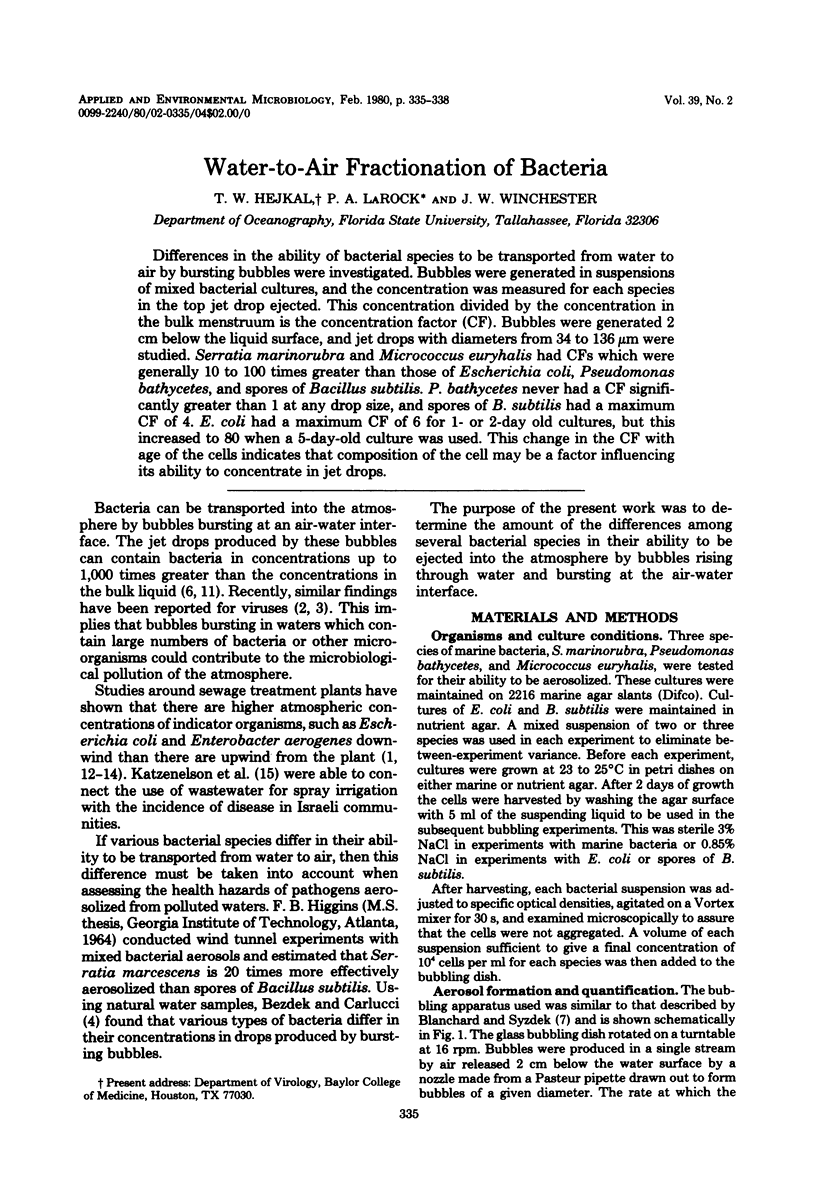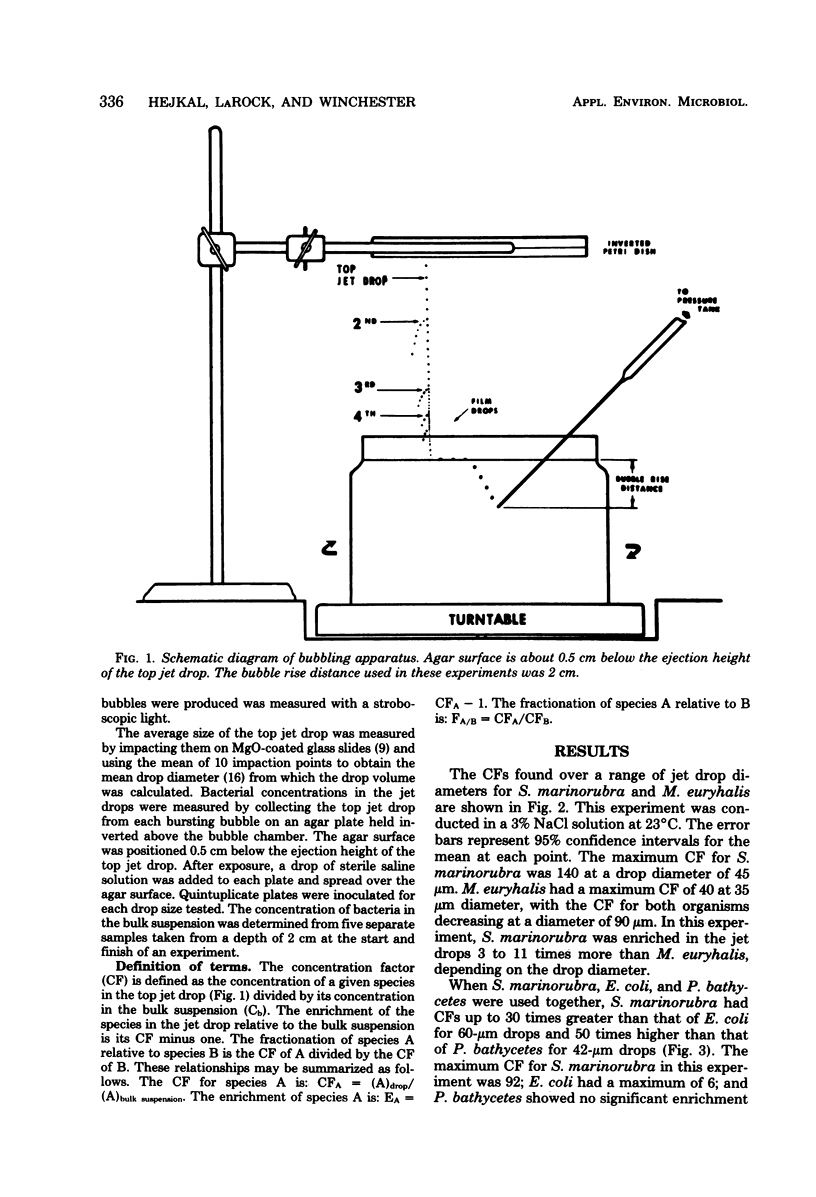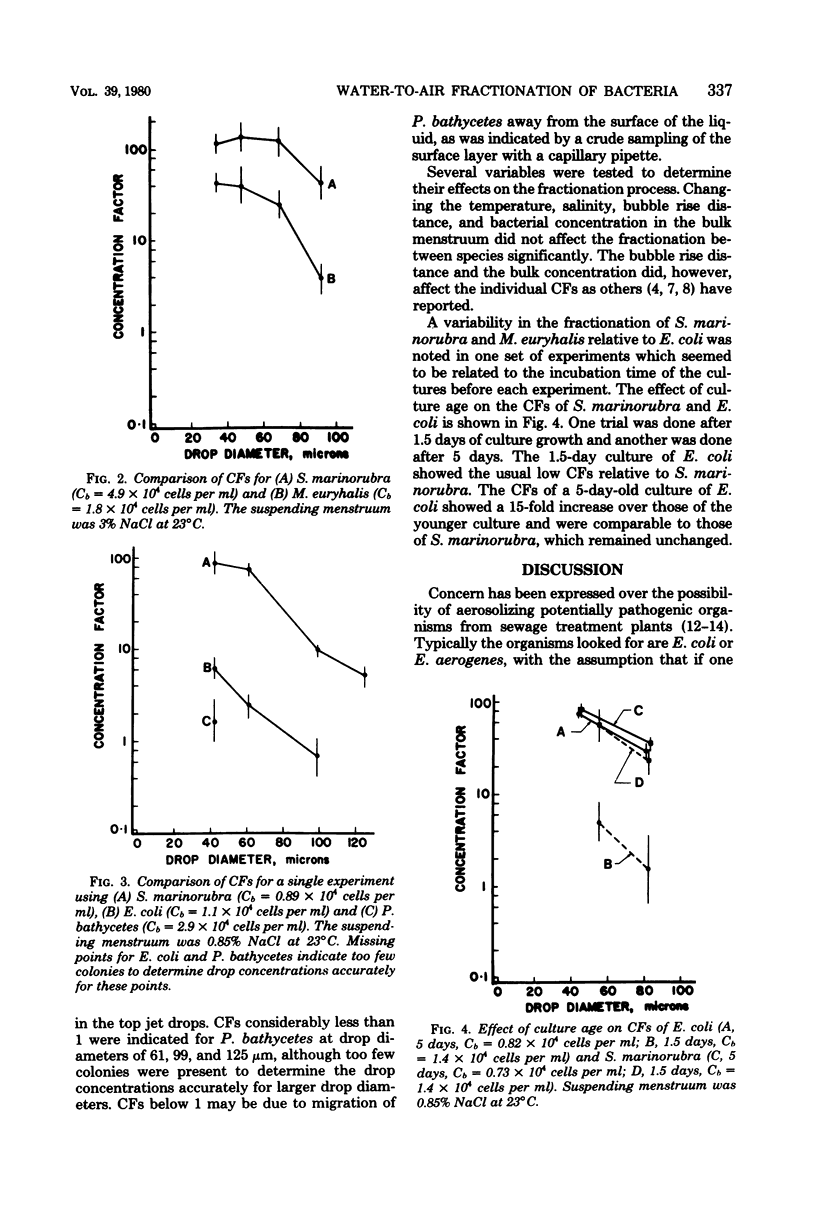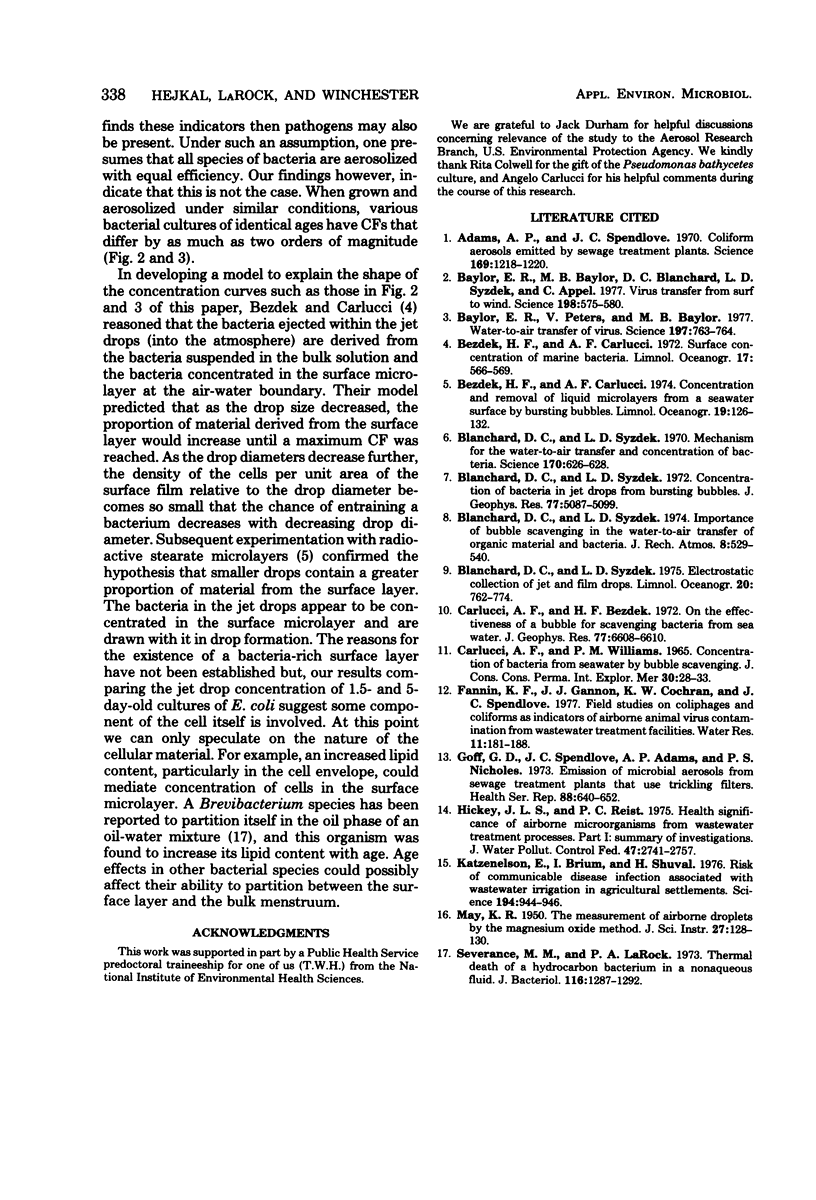Abstract
Differences in the ability of bacterial species to be transported from water to air by bursting bubbles were investigated. Bubbles were generated in suspensions of mixed bacterial cultures, and the concentration was measured for each species in the top jet drop ejected. This concentration divided by the concentration in the bulk menstruum is the concentration factor (CF). Bubbles were generated 2 cm below the liquid surface, and jet drops with diameters from 34 to 136 μm were studied. Serratia marinorubra and Micrococcus euryhalis had CFs which were generally 10 to 100 times greater than those of Escherichia coli, Pseudomonas bathycetes, and spores of Bacillus subtilis. P. bathycetes never had a CF significantly greater than 1 at any drop size, and spores of B. subtilis had a maximum CF of 4. E. coli had a maximum CF of 6 for 1- or 2-day old cultures, but this increased to 80 when a 5-day-old culture was used. This change in the CF with age of the cells indicates that composition of the cell may be a factor influencing its ability to concentrate in jet drops.
Full text
PDF



Selected References
These references are in PubMed. This may not be the complete list of references from this article.
- Adams A. P., Spendlove J. C. Coliform aerosols emitted by sewage treatment plants. Science. 1970 Sep 18;169(3951):1218–1220. doi: 10.1126/science.169.3951.1218. [DOI] [PubMed] [Google Scholar]
- Baylor E. R., Baylor M. B., Blanchard D. C., Syzdek L. D., Appel C. Virus transfer from surf to wind. Science. 1977 Nov 11;198(4317):575–580. doi: 10.1126/science.918656. [DOI] [PubMed] [Google Scholar]
- Baylor E. R., Peters V., Baylor M. B. Water-to-air transfer of virus. Science. 1977 Aug 19;197(4305):763–764. doi: 10.1126/science.329413. [DOI] [PubMed] [Google Scholar]
- Blanchard D. C., Syzdek L. Mechanism for the water-to-air transfer and concentration of bacteria. Science. 1970 Nov 6;170(3958):626–628. doi: 10.1126/science.170.3958.626. [DOI] [PubMed] [Google Scholar]
- Goff G. D., Splendlove J. C., Adams A. P., Nicholes P. S. Emission of microbial aerosols from sewage treatment plants that use trickling filters. Health Serv Rep. 1973 Aug-Sep;88(7):640–652. [PMC free article] [PubMed] [Google Scholar]
- Hickey J. L., Reist P. C. Health significance of airborne microorganisms from wastewater treatment processes. Part I: Summary of investigations. J Water Pollut Control Fed. 1975 Dec;47(12):2741–2757. [PubMed] [Google Scholar]
- Katzenelson E., Buium I., Shuval H. I. Risk of communicable disease infection associated with wastewater irrigation in agricultural settlements. Science. 1976 Nov 26;194(4268):944–946. doi: 10.1126/science.982051. [DOI] [PubMed] [Google Scholar]
- Severance M. M., LaRock P. A. Thermal death of a hydrocarbon bacterium in a nonaqueous fluid. J Bacteriol. 1973 Dec;116(3):1287–1292. doi: 10.1128/jb.116.3.1287-1292.1973. [DOI] [PMC free article] [PubMed] [Google Scholar]


